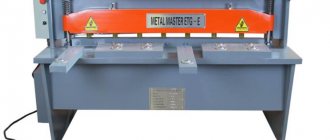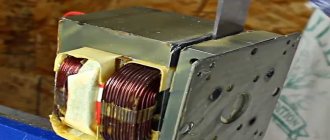Useful information about the practical use of a wedge anchor - one of the most reliable hardware for fixing heavy objects on concrete surfaces.
The wedge anchor for concrete has the best holding capacity among mechanical type expansion fasteners, which allows it to be used for heavy and medium loads. It consists of a threaded stud at one end and a spacer at the other. The fastener comes with a nut and washer. When the nut is tightened, the tapered shank is pulled into the collet sleeve, wedging it apart and thereby ensuring rigid fixation in the hole.
Where is a wedge anchor used?
The peculiarity of the stud is that it can be used in various fields, from repair work in production to simple home installation. Unlike other fasteners, the anchor can cope even with the task where it is necessary to connect a concrete or brick surface with heavy elements.
Due to the fact that the hardware is made of high-quality steel, it reliably fastens the necessary parts, merging with their structure. Therefore, these fasteners have found their application in the installation of elevators, cable routes and large staircases. The main thing here is to follow all the rules for installing it.
For example, when installing a ceiling chandelier, you cannot do without this mount. It is the wedge anchor, consisting of a steel rod, a locking cap and a wedge-shaped spacer, that gives stability to heavy chandeliers, preventing them from unexpectedly falling.
Application
It is difficult to dismantle an object secured with a wedge anchor later.
Long anchors of large diameter, up to 20×117, are used in the construction of large structures; they are capable of holding several tens of tons. Simple anchors are used in everyday life. A 6×40 wedge anchor in dense materials – concrete, brick – can withstand loads of up to 300 kg, a 6×60 wedge anchor – up to half a ton. But you need to take into account that the material in which the anchor is installed must be very dense.
Ceiling anchor wedge is used in basic construction for hanging heavy elements from the ceiling, such as strips, channels, sheet metal. Can also be used on walls.
Disadvantages of the wedge anchor:
- It cannot be reused.
- Ceiling fasteners are difficult to dismantle only if you cut off the cap with a grinder or cutter. But usually these fasteners are not used on temporary units.
Characteristics of wedge anchor
Hydrocarbon steel is used to produce hardware. Their design consists of a thread at one end and a wedging head at the other. It is represented by a coupling that fits into the canvas, securely fastening there.
The difference between such parts and similar hardware is that the anchors are not provided with a protective “jacket”. When working with this part, you do not need to monitor the depth of its penetration. Which has its advantage, because most often it is impossible to do.
Another feature of such hardware is the calculation of the pressure that the anchors exert on the material. This will help to correctly calculate not only the number of anchors, but also its dimensions.
- To do this, use a special table, involving a specialist from this field for the calculation. After calculating the size of the hardware, their size is slightly increased. This is an unspoken rule that must always be followed if you want to get the best results when installing anchors.
- The size range of these hardware is very easy to find out, because its value is stamped on the fastener itself and is indicated by the WAN marking.
- But there are cases when such an emblem is missing. Then a special unit is used for measurement - a caliper.
It is also worth noting that the dimensions indicated on the hardware are deciphered as follows.
For example, concrete fasteners with dimensions such as 15*12*100.
It deciphers like this:
- 15 – width of the body part,
- 12 – stud size,
- 100 is the length of the part itself.
Based on these dimensions, the necessary key required to secure the anchor is selected.
Principle of operation
Installing a wedge anchor is quite simple, so even those who have never encountered such work before can carry it out. The only difficulty may be choosing the correct diameter for the hole.
Installation
Installation of a wedge-type anchor proceeds according to the following algorithm:
- A hole is prepared on the base surface, the diameter of which coincides with the transverse dimension of the anchor.
- Removing dust and crumbled base particles from the resulting hole. It is not necessary to clean as thoroughly as possible.
- Installing the anchor into the hole by hammering it in.
- Fastening the anchor to the surface. To do this, use a wrench to turn the structural nut on the anchor. Due to this, the pin moves along the longitudinal axis, and the shank opens the spacer mechanism at the end. This allows you to securely fix the mount in the wall and protect it from turning.
Installation of a wedge type anchor is carried out in several steps
Dismantling
During the operation of the wedge anchor, a situation may arise when it is necessary to remove the fastening. If during installation it is known that the wedge anchor will be removed after some time, the hole for it is made larger than the length of the product.
To remove it, you need to remove the object installed on the anchor, release it from the top nut and hammer it in until it stops so that its end is level with the wall. If a small hole remains, it is sealed with cement mortar or putty.
Reusing the wedge anchor is impossible, since it is impossible to remove it from its installed location.
Pros and cons of wedge anchor
These fasteners are simply irreplaceable for fastening various elements in construction. Like their counterparts, they have both positive and negative sides.
pros
- Reliable fastening;
- Resistance to corrosion;
- Possessing minimal dimensions;
- High range of products;
- Installing the anchor will not take much time;
- Even a beginner can install hardware;
- Low cost.
Minuses
- Not suitable for all applications. Not suitable for mounting to wood or drywall;
- The anchor can be used once.
What are anchors made of?
There are three main groups of such fasteners, which are made from:
- Structural carbon steel. This case involves subsequent galvanization, due to which the galvanized wedge anchor becomes resistant to corrosion. Protection layers can be applied either by hot-dip galvanizing or galvanizing;
- Stainless steel, which has the same strength characteristics as regular steel. In this case, galvanizing is not required, since they are not initially susceptible to corrosion. Such products are usually produced to specific order due to the rather high cost;
- Brass, as well as other alloys of non-ferrous metals suitable for these purposes. They are intended for special applications. The components that make up the alloy determine their performance characteristics.
Design and marking features
Each such anchor has the following design. This is a metal pin made from a threaded application on the outside. Next, the part is distinguished by a coupling, which somewhat resembles a belt with a movable mechanism.
The end of the hardware consists of a cone-shaped tail. The entire part is completed by a nut, which is also an integral element for reliable fixation of the necessary surfaces.
Each material has its own wedge anchor, which is selected depending on the weight of the surface to be fastened, its use and the thickness of the hardware. During production, they are marked with the abbreviation WAN. This is followed by the anchor parameters (length, diameter and thread type).
What is a wedge anchor?
These advantages are due to the specific design of the bolt, which consists of the following elements:
- metal rod with thread;
- movable washer;
- “tail” in the shape of a cone;
- wide nut for fixation;
- spacer mechanism.
You can recognize a wedge anchor not only by its appearance, since each product is marked with a special “WAM” icon.
Further, the marking indicates other indicators: bolt type, manufacturer, rod and thread diameter, length, configuration features.
How to choose a wedge anchor
The variety of these hardware sometimes takes even experienced construction workers by surprise. To secure any anchor, its own depth is required. If you take a 40 mm part, then a hole of 27 mm is prepared for it.
According to GOST standards, the measurement of hardware begins with a length of 40 mm, with a step of 5 mm. The maximum value here is 100 mm. Such parts are distinguished by the absence of a protective “shirt”.
Experts advise that before purchasing these hardware, you should pay attention to two such functionalities:
- Maximum workload;
- Leveling load.
Here you need to take into account that the difference between the above parameters should not exceed 25%. In this case, the workload is highlighted by its maximum value.
When purchasing hardware, it is also advised to pay attention to the material of the surface to which the anchor will be attached. Because for concrete, hardware is taken that has a high level of load.
High quality products must have a certain certificate, which will tell you according to GOST whether the proposed fastenings were made or not. Such a document must be available at each retail outlet and presented by the seller upon the buyer’s first request.
Mounting options
| M6 | M8 | M10 | M12 | M16 | M20 | |
| Drill diameter, mm | 6 | 8 | 10 | 12 | 16 | 20 |
| Hole length, mm | 55 | 65 | 70 | 90 | 110 | 130 |
| Installation depth, mm | 49 | 58 | 62 | 82 | 102 | 121 |
| Diameter of hole in part, mm | 7 | 9 | 12 | 12 | 18 | 22 |
| Nut tightening force, Nm | 8 | 15 | 30 | 50 | 100 | 200 |
Installation instructions
- A hole in the concrete base is drilled with a drill with a carbide tip using a hammer drill or impact drill.
- Before installing the dowel, it is important to thoroughly clean the hole from drill chips, first using a metal brush and then a purge pump.
- Screw the nut onto the threaded end of the stud, placing a washer underneath it. Align the top of the nut with the end of the stud. This is done to protect the start of the thread from damage by a hammer.
- Insert the fastener through a hole in the part to be attached (through-hole installation) or directly into the material (pre-assembly) and drive it in with a hammer.
- Screw the nut first by hand until the washer fits snugly against the surface, and then tighten it with a wrench, making 3-5 turns.
Wedge anchor installation instructions
For better fixation of products with an anchor, certain rules must be followed. Firstly, without a hole it will not be possible to fasten the hardware. Secondly, the fastening depends on the coupling, which moves along the tail of the hardware and triggers the spacer system.
Installing an anchor will not take much time and effort if you follow these rules.
- Prepare a hole that will match the width of the anchor.
- Cleaning this recess from the result of work (dust and debris).
- Installing the hardware into the hole and pressing it in using a standard hammer.
- Using a nut to securely fix the hardware and surface.
- Tightening the nut, which helps release the internal clamp and connect it to the walls of the part.
Advice! After installing the hardware, its installation is carried out. To do this, make a hole for the anchor slightly larger than its width. Remove the fasteners, being careful not to damage the walls of the canvas.
Remove the top nut, carefully driving the hardware to the end. The last step is to seal the hole with mortar (putty or cement). And the secure fastening is ready.
Recommendations for selection
When buying a wedge dowel, you need to take into account two parameters of the maximum loads: one is related to alignment, the other represents the maximum value that the bolt can withstand. It is also recommended to check the product certificate . Since dowels are often purchased for the installation of demanding heavy structures, the safety of people depends on their reliability and quality.
The workload can exceed the leveling limit by a maximum of 25%. If the concrete is strong enough, the anchor should be able to withstand high loads.
Analogs
Universal anchor sleeve
Although the bolt does not have a complete analogue in terms of design and functionality, on the construction market you can find a wide range of fasteners that allow you to connect structures made of different types of materials. The following types of parts are widely used in construction work:
- Universal anchor fasteners of standard design.
- Brass anchors , suitable for fixing various building components on concrete surfaces.
- Rod clamps . Their structure requires a large depth, and this must be taken into account when preparing the holes.
- Anchor elements for lightweight materials and structures . They allow you to work with plywood and plasterboard surfaces, securing various lightweight objects to them.
- Chemical fasteners , which use a metal pin and special glue. They are convenient because their installation does not require special physical strength. A capsule is installed in a pre-drilled hole. Inside it are glue and a hardening compound, separated by a partition. Later, a pin is inserted into the hole, which breaks the integrity of the shell and the separation membrane, resulting in the mixing and reaction of the two chemical components. The glue fills the cavity, and after it hardens, a strong bond is formed between the metal fastener and the walls of the hole.
Each fastener is designed for specific loads and connection methods. When selecting fasteners, these factors must be taken into account. The types of materials from which the connecting surfaces are made are also taken into account.











